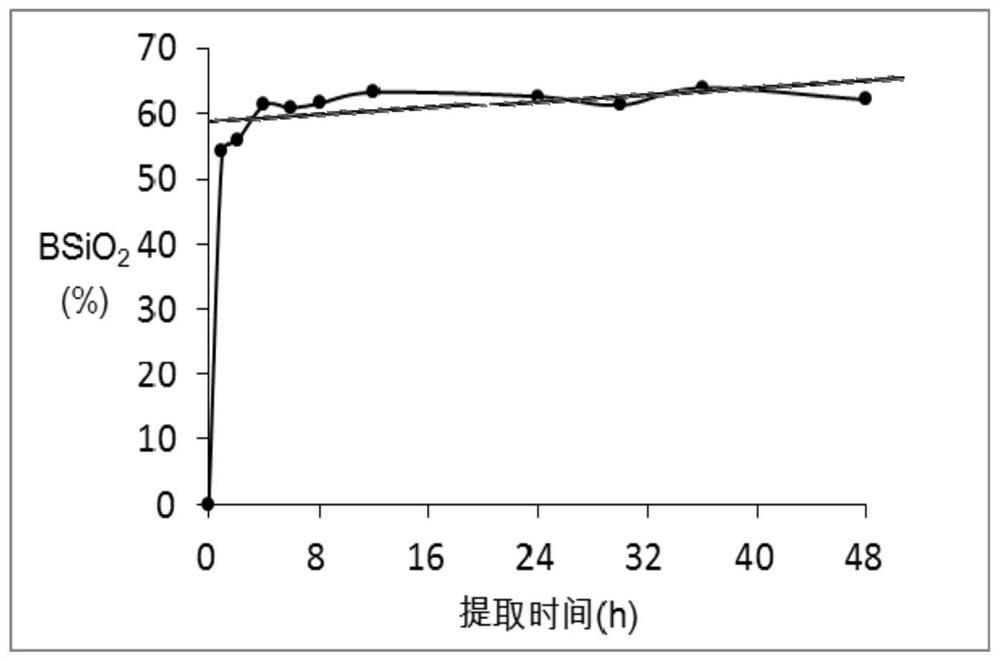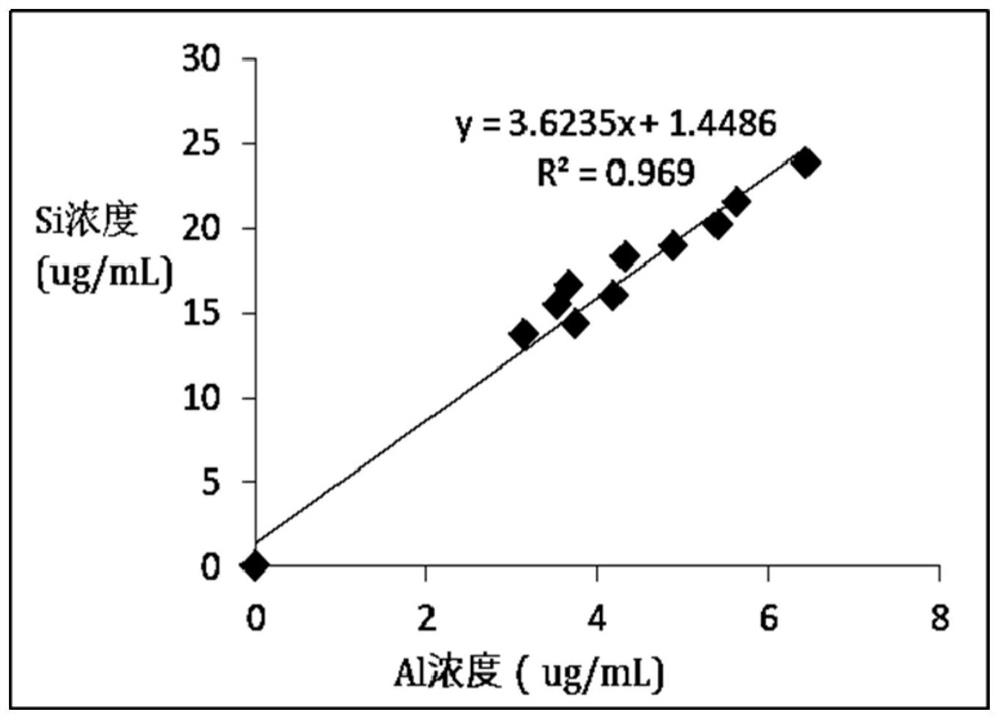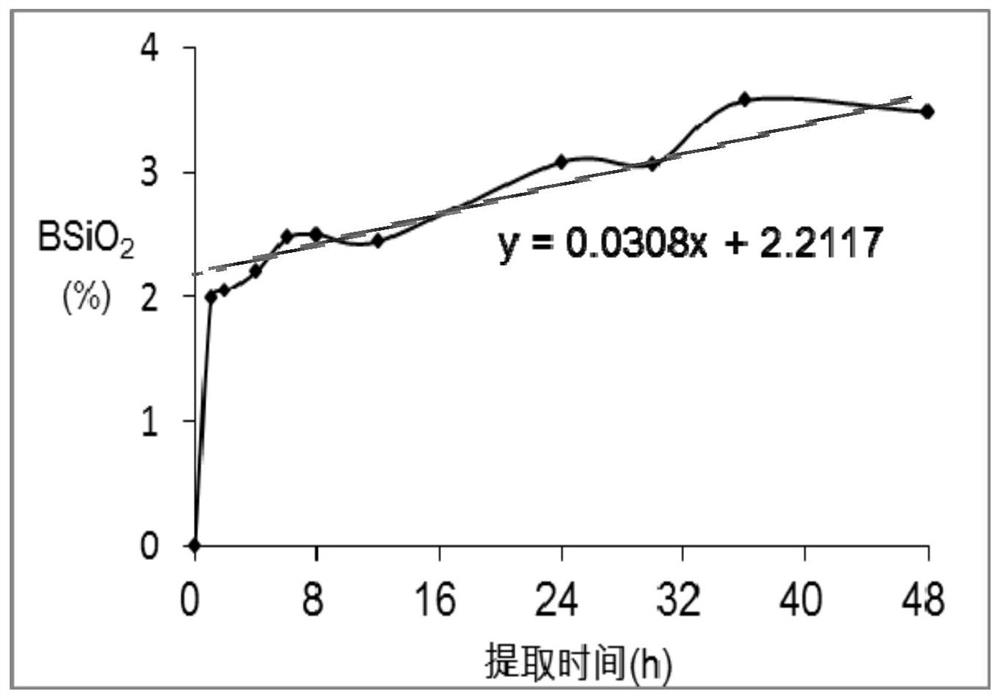Method for determining content of biological silicon in sedimentary rock
A technology of sedimentary rock and bio-silicon, which is applied in the field of petroleum geology research, can solve problems such as difficulty in extraction, and achieve the effect of reducing measurement errors
- Summary
- Abstract
- Description
- Claims
- Application Information
AI Technical Summary
Problems solved by technology
Method used
Image
Examples
Embodiment 1
[0041] This embodiment provides a method and measurement results for determining the biosilicon content of the low-evolution sample NJ-1.
[0042] 1. Sample grinding
[0043] Use a plastic brush to remove the surface attachments of the sedimentary rock NJ-1, clean the agate mortar with water and alcohol, put a small piece of NJ-1 sample, and grind it manually until the particle size is ≤200 mesh.
[0044] 2. Put the ground sample into a sample bottle, dry it at 60°C for 24 hours, take it out and store it in a desiccator.
[0045] 3. Weigh 75 mg of the sample into a 50 mL polyethylene centrifuge tube, add 5 mL of 1 mol / L hydrochloric acid solution into the centrifuge tube, and let it stand for 2 hours until the reaction is complete to remove carbonates. After the reaction was complete, 20 mL of water was added, centrifuged at 3000 rpm for 5 min in a centrifuge, and the supernatant was removed.
[0046] 4. Add 5mL of 10% hydrogen peroxide solution and let stand overnight to re...
Embodiment 2
[0058] This embodiment provides a method and measurement results for determining the biosilicon content of the highly evolved sample YJC-0, and the determination method is the same as that in Example 1.
[0059] Table 2 shows the results of the extraction experiment of the highly evolved sample YJC-0. It can be seen from Table 2 that the contents of Si, Al, and Ti in the extraction solution are all low, and the Al content is 10%-25% of the Si content, that is to say Abiotic silicon or higher silicon from clay minerals must be corrected for abiotic silicon. figure 2 It shows the relationship diagram of Si and Al concentration changes in the YJC-0 sample extract solution of Example 2 of the present invention. from figure 2 It is found that the content of Si and Al in the extract varies close to 1:1, so it can be inferred that the ratio of non-biological silicon to Al in the sample is 1:1, and the biological silicon data can be corrected by this coefficient. pass image 3 Th...
PUM
 Login to View More
Login to View More Abstract
Description
Claims
Application Information
 Login to View More
Login to View More - R&D
- Intellectual Property
- Life Sciences
- Materials
- Tech Scout
- Unparalleled Data Quality
- Higher Quality Content
- 60% Fewer Hallucinations
Browse by: Latest US Patents, China's latest patents, Technical Efficacy Thesaurus, Application Domain, Technology Topic, Popular Technical Reports.
© 2025 PatSnap. All rights reserved.Legal|Privacy policy|Modern Slavery Act Transparency Statement|Sitemap|About US| Contact US: help@patsnap.com



